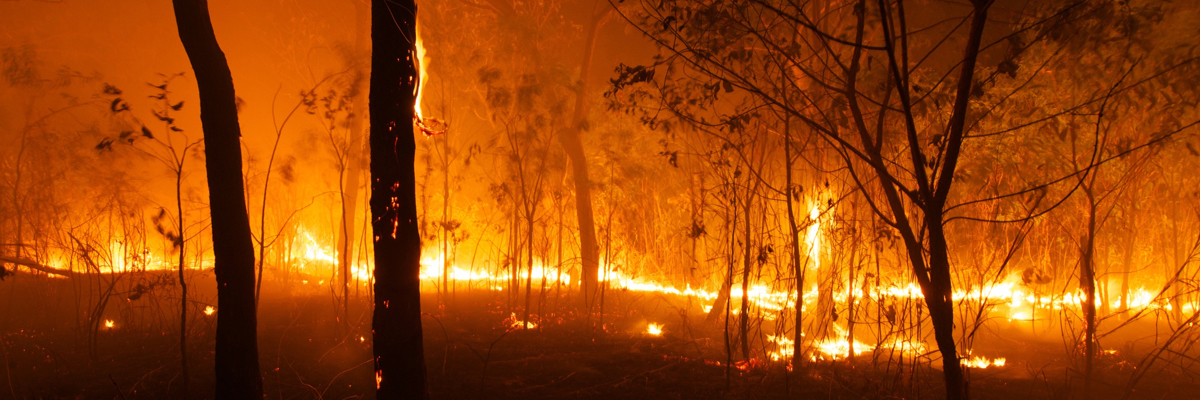BMP Insights: Secret Parts and Benefits of a Bushfire Management Plan
BMP Insights: Secret Parts and Benefits of a Bushfire Management Plan
Blog Article
Necessary Tips for Bushfire Management to Guarantee Fire Security

Comprehending Bushfire Threat Degrees
Comprehending the varying levels of bushfire danger is essential for efficient preparation and preparation in mitigating prospective hazards to lives and buildings. Bushfire threat levels are generally categorized based upon elements such as weather, fuel schedule, topography, and historical fire habits. By understanding these risk neighborhoods, individuals and levels can proactively apply approaches to reduce susceptability and boost resilience when faced with prospective bushfire occasions.
The first level of bushfire threat is reduced danger, where the probability of a bushfire happening and triggering significant harm is marginal. High-risk levels represent a considerable danger, with conditions helpful to rapid fire spread and severe fire actions.
Understanding these bushfire danger levels allows stakeholders to tailor their readiness and action actions as necessary, making sure a reliable and positive approach to bushfire monitoring.
Establishing a Defensible Room
Efficient bushfire management starts with developing a defensible space around buildings to improve protection versus potential fire hazards. A defensible room is a barrier area that produces an obstacle in between a framework and the surrounding combustible plants. This area works as an important line of defense, giving firefighters a safe area to run and aiding to minimize the risk of a fire infecting the building.
When establishing a defensible room, it is vital to consider the design of the residential or commercial property and the bordering landscape. Cleaning plant life, particularly highly combustible plants, within a certain span of the residential or commercial property can aid avoid the quick spread of fires. Additionally, preserving a well-irrigated zone around the building can better boost its defensibility.
Regular upkeep of the defensible space is crucial to ensure its effectiveness. This consists of cutting overhanging branches, getting rid of dead plant life, and keeping the location cost-free of debris. By investing effort and time into establishing and preserving a defensible area, homeowner can significantly boost their opportunities of securing their homes and properties during a bushfire.
Implementing Fireproof Landscape Design
When making landscapes to alleviate the risk of bushfires, including fireproof elements is essential for enhancing residential or commercial property defense and lowering fire hazards. Select plants with high moisture web content, low oil web content, and very little dead vegetation to decrease the threat of fire spread.

Producing an Emergency Evacuation Plan
Developing a thorough emergency situation emptying plan is crucial for making certain the safety and security and health of people during possible bushfire events (Bushfire Management Plan). An efficient evacuation plan need to outline clear procedures to comply with in case of a bushfire threat, consisting of designated emptying paths, assembly factors, and interaction methods
To start producing an emergency situation evacuation strategy, it is important to assess the particular dangers and vulnerabilities of your area. Determine numerous evacuation routes that bring about safe areas away from the fire, thinking about aspects such as terrain, road access, and potential hazards. Develop communication channels to sharp citizens of an upcoming emptying, utilizing methods such as sirens, message informs, or door-to-door notices.
Consistently review and practice the emptying strategy with all locals or neighborhood members to ensure everybody recognizes their duties and responsibilities. Conduct drills to evaluate the effectiveness of the strategy and make any needed adjustments. By having a well-prepared evacuation strategy in position, you can enhance the chances of a secure and organized evacuation during a bushfire emergency.
Maintaining Fire Security Equipment
After developing a thorough emergency emptying prepare for bushfire cases, it is essential to prioritize the regular maintenance of fire safety devices to ensure ideal capability and readiness. Normal upkeep of fire safety equipment such as fire extinguishers, smoke alarm, BMP fire alarm systems, and lawn sprinkler is essential in guarding lives and property during a bushfire. When needed., carrying out regular inspections, testing, and maintenance of these gadgets by certified experts is vital to guarantee they are in working order.
Fire extinguishers should be inspected routinely for stress levels, visible damage, and proper performance. By vigilantly preserving fire safety equipment, individuals can enhance their preparedness and response abilities in the occasion of a bushfire.
Verdict
Finally, efficient bushfire management entails comprehending risk degrees, creating defensible rooms, applying fire-resistant landscaping, developing emptying strategies, and keeping fire safety devices. By following these crucial tips, individuals can make sure better fire defense and safety for their residential or commercial properties and communities. It is very important to focus on proactive procedures to mitigate the threats related to bushfires and to be planned for emergencies.
By recognizing the nuances of bushfire threat levels, developing defensible rooms, executing fire-resistant landscape design, developing detailed emptying plans, and guaranteeing the upkeep of fire safety and security equipment, people and areas can significantly boost their strength against the ravages of wildfires - BAL Assessment. These ideas are not just essential for guarding versus instant fire hazards yet also for cultivating long-lasting fire protection approaches that can make a considerable distinction in the face of escalating bushfire hazards
Risky levels represent a considerable hazard, with problems helpful to quick fire spread and extreme fire behavior. Regular maintenance of fire safety devices such as fire extinguishers, smoke detectors, fire alarm systems, and lawn sprinkler systems is important in guarding lives and property during a bushfire.In final thought, reliable bushfire management includes understanding danger degrees, creating defensible areas, implementing fire-resistant landscaping, establishing emptying plans, and preserving fire security equipment.
Report this page